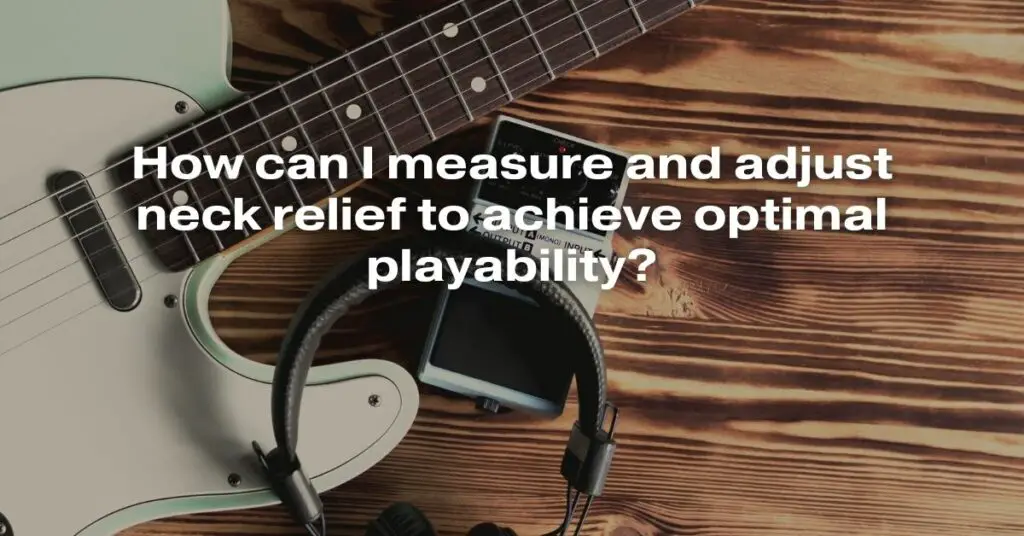Achieving optimal playability on your guitar is essential for a satisfying playing experience. One of the key factors that contribute to this is the neck relief, which refers to the slight curvature of the guitar neck. Proper neck relief ensures that your guitar plays comfortably without any buzzing or discomfort. In this article, we will explore the importance of neck relief, how to measure it, and the steps to adjust it for an enhanced playing experience.
Understanding Neck Relief
Neck relief, also known as neck curvature or bow, is the amount of curvature in the neck of your guitar. This curvature is necessary to allow the strings to vibrate freely without touching the frets, preventing unwanted buzzing sounds. Too much or too little neck relief can lead to issues such as high action, buzzing, or difficulty in playing.
Why Neck Relief Matters
Prevents Buzzing: Proper neck relief ensures that the strings have enough space to vibrate without hitting the frets, eliminating buzzing noises while playing.
Optimal Action: Maintaining the right amount of neck relief ensures that your guitar’s action (the distance between the strings and the frets) is comfortable, allowing for easy fretting and bending.
Climate Adaptation: Changes in temperature and humidity can affect the neck’s curvature. Regularly checking and adjusting neck relief helps your guitar adapt to different climates, ensuring consistent playability.
How to Measure Neck Relief
Measuring neck relief requires a feeler gauge, a thin piece of metal used to measure the gap between the strings and the frets. Here’s how you can measure neck relief:
Capo the First Fret: Use a capo to press down the first fret of your guitar.
Press the Last Fret: Hold down the low E string at the last fret, where the neck meets the body.
Measure the Gap: Slide the feeler gauge between the bottom of the low E string and the top of the 8th or 9th fret. The ideal gap varies based on your playing style and preference, but a common starting point is around 0.010-0.012 inches (0.25-0.30mm).
How to Adjust Neck Relief
If you find that your guitar’s neck relief needs adjustment, here are the steps to follow:
Truss Rod Adjustment: Most guitars have a truss rod, a metal rod inside the neck that can be tightened or loosened to adjust neck relief. Use an appropriate truss rod wrench to make subtle adjustments. Remember, small turns can make a significant difference, so proceed with caution.
Allow Time to Settle: After making an adjustment, give your guitar some time to settle. Changes in neck relief can take a few hours or even days to fully manifest.
Check and Re-adjust: Play your guitar and assess the playability. If needed, make further adjustments until you achieve the desired neck relief.
Conclusion
Properly measuring and adjusting neck relief is crucial for maintaining your guitar’s optimal playability. By understanding the significance of neck relief and following the right techniques for measurement and adjustment, you can ensure that your guitar plays comfortably and sounds fantastic. Regularly checking and adjusting neck relief will not only enhance your playing experience but also prolong the life of your instrument, making it a worthwhile practice for any guitarist.

